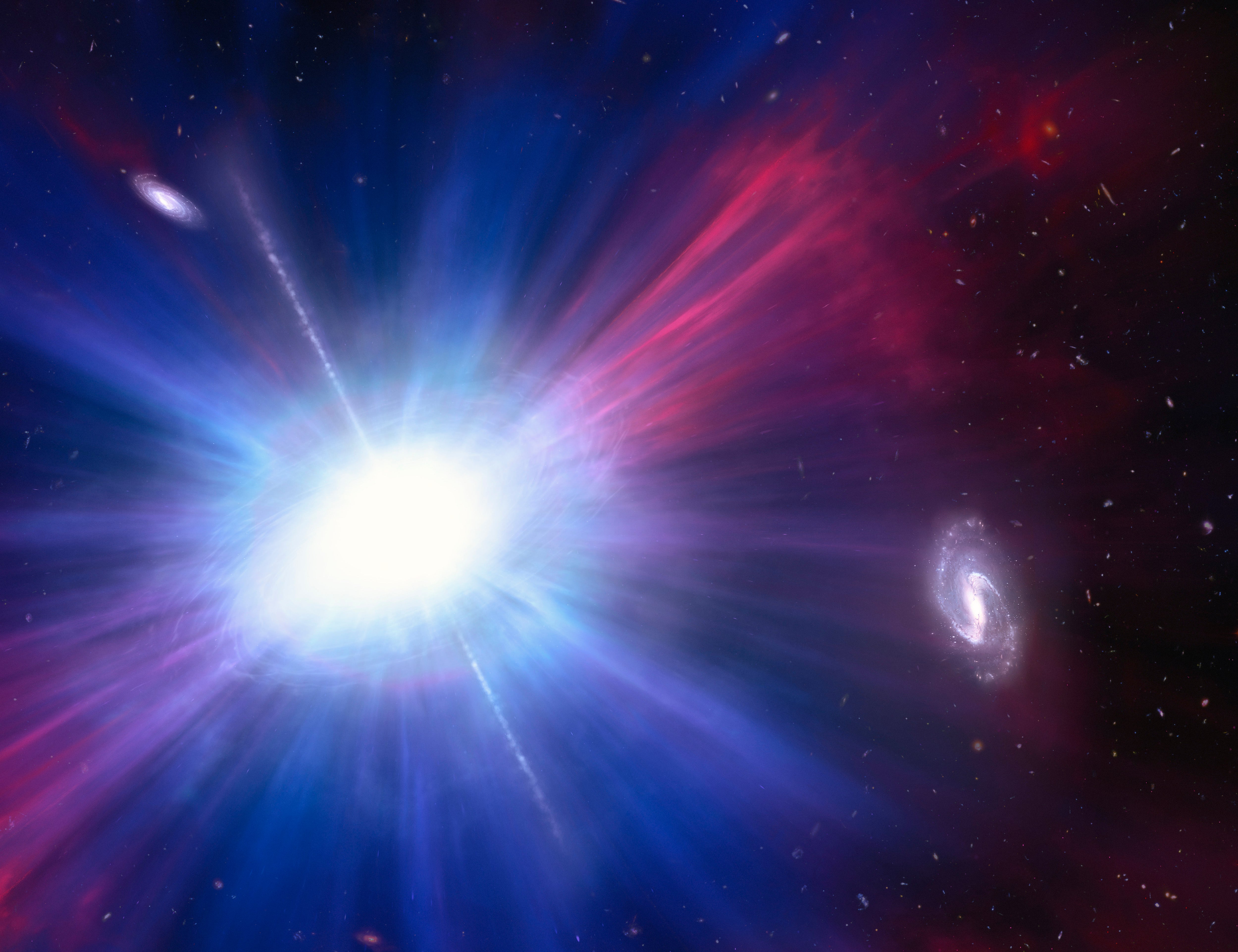
In September 2022, a distant dead star reawakened with a flash of light. The brilliant and powerful pulsing signal is about one billion light-years from Earth and was picked up by 15 different telescopes worldwide. It’s named AT2022tsd or the “Tasmanian devil”.
Mysterious signals called Luminous Fast Blue Optical Transients (LFBOTS) are the suspected source of the dead star’s flares. The first LFBOT was observed in 2018 and dubbed “The Cow.” NASA says about one are detected per year and they are “among the brightest known visible-light events in the universe.”
These bright waves of blue light reach peak intensity in a few minutes, only to fade away. While quick, the flashes are as intense as the star’s original explosion. The behavior is different from supernovas that can take weeks to months to lose their intensity, according to NOIRLab.
The “Tasmanian devil” flashed several times, according to the authors of a new study published in Nature. They suspect the energy source of AT2022tsd could be from a magnetar or an accreting black hole. “We don’t think anything else can make these kinds of flares,” said Anna Y. Q. Ho, study first author and astrophysicist at Cornell University, in a statement. “This settles years of debate about what powers this type of explosion and reveals an unusually direct method of studying the activity of stellar corpses.”
Spotting the ‘Tasmanian devil’ dead star
Ho detected the flashy stellar corpse with software that sifts through 500,000 changes in the sky captured by the Zwicky Transient Facility camera on the Samuel Oschin Telescope at California’s Palomar Observatory. Then, Ho and other researchers analyzed images that picked up the spike of light. Using the data collected from other telescopes worldwide, Ho and her team ruled out other potential light sources and homed in on the Tasmanian Devil’s pulsating light. The team confirmed 14 light pulses that flashed over 120 days in the analysis.
“Amazingly, instead of fading steadily as one would expect, the source briefly brightened again – and again, and again,” Ho said in the statement. “LFBOTs are already a kind of weird, exotic event, so this was even weirder.”









